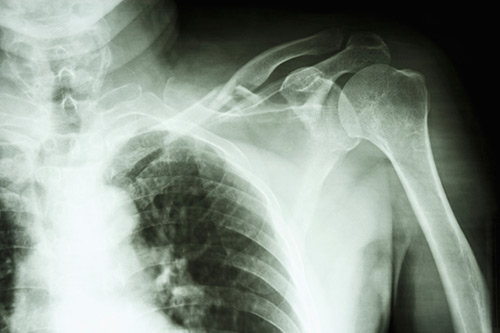About a bone
 Along with gray hair and wrinkles, aging also brings with it more fragile bones. Now researchers have learned that the natural bone aging process can be hastened by a deficiency in vitamin D. Working with colleagues from the University Medical Center in Hamburg, Germany, the Berkeley team—led by Robert Ritchie, professor of materials science and engineering—analyzed bone samples and measured their resistance to cracking. Their testing showed that vitamin D deficiency increased cracking by 22 to 31 percent. Upon further examination of samples from vitamin D-deficient subjects, the scientists found sections of heavily mineralized bone, which resembles older and more brittle bone, underneath new, non-mineralized bone surfaces. Surrounded by collagen, these mineralized sections were separated from the cells that could remodel them, which further accelerated the aging process. The researchers hope their work will eventually lead to more effective ways to prevent or treat fractures in patients with a vitamin D deficiency.
Along with gray hair and wrinkles, aging also brings with it more fragile bones. Now researchers have learned that the natural bone aging process can be hastened by a deficiency in vitamin D. Working with colleagues from the University Medical Center in Hamburg, Germany, the Berkeley team—led by Robert Ritchie, professor of materials science and engineering—analyzed bone samples and measured their resistance to cracking. Their testing showed that vitamin D deficiency increased cracking by 22 to 31 percent. Upon further examination of samples from vitamin D-deficient subjects, the scientists found sections of heavily mineralized bone, which resembles older and more brittle bone, underneath new, non-mineralized bone surfaces. Surrounded by collagen, these mineralized sections were separated from the cells that could remodel them, which further accelerated the aging process. The researchers hope their work will eventually lead to more effective ways to prevent or treat fractures in patients with a vitamin D deficiency.

